Neilster
Posts: 2890
Joined: 10/27/2003
From: Hobart, Tasmania, Australia
Status: offline

|
quote:
ORIGINAL: brian brian
Hex based games are fine, that's just a mapping system that may be around for a while I think. But the I-go, You-go turn sequence is something that can be greatly improved upon via using computers. I haven't looked around the state of computer wargaming much (too much time thinking about/playing WiF I guess), but I suspect that is out there. I used to play a lot of Squad Leader up through about Crescendo of Doom (maybe I should rephrase that ... I used to play a heck of a lot of Cross of Iron and all other iterations, not so much), but eventually I got tired of the compromises in simulating what a company/battalion commander really must / can do that are perhaps not that possible to simulate with cardboard. Even at the level of WiF, where over time I began to feel the player was much closer to a realistic simulation of what it was like for the decision makers than in tactical games, imagine what the game could be like with you issuing orders while the other leaders do the same and then the computer resolves what happens as a result....
The Mel Gibson movie "We Were Soldiers Once, and Young" I thought was a brilliant depiction of operational tactical combat and I think when I get around to watching the DVD of it, not long afterwards I'll start shopping for a good WWII tactical game that features hidden enemy forces, sometimes limited command and control, and simultaneous activity. Whether that game has a hex-based map and 'pieces' representing groups of men, or a 3-D graphic map or even video styled like real-time shooter arcade games I will never be interested in, I won't care.
Check out the Panther Games stuff (Highway to the Reich, Conquest of the Aegean and also Battles From The Bulge is near release). Best AI in wargames and WEGO at the grand tactical/operational scale.
Personally, I don't mind turn-based, especially at the larger scales. Many times when reading military history I noticed that the operations by either side tend to be in alternate pulses.
Cheers, Neilster
|
 Printable Version
Printable Version
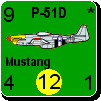





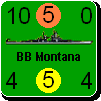







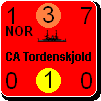



 ; im 32.
; im 32.


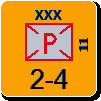
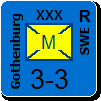
 At 49 thats all my so-called "peers" think about these days. (Boring!) I avoid these crusty fools like the plague. (Fortunately we have a WiF cult here that ignores the foolish outside world so we can focus upon the only meaning of life; WiF Global Campaign w/most mods & house rules added!).
At 49 thats all my so-called "peers" think about these days. (Boring!) I avoid these crusty fools like the plague. (Fortunately we have a WiF cult here that ignores the foolish outside world so we can focus upon the only meaning of life; WiF Global Campaign w/most mods & house rules added!).
 New Messages
New Messages No New Messages
No New Messages Hot Topic w/ New Messages
Hot Topic w/ New Messages Hot Topic w/o New Messages
Hot Topic w/o New Messages Locked w/ New Messages
Locked w/ New Messages Locked w/o New Messages
Locked w/o New Messages Post New Thread
Post New Thread